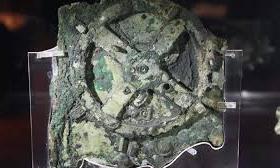
Scientists mystified by 2,000-year-old device found in a shipwreck
text_fieldsResearchers continue to be baffled by the Antikythera mechanism, a highly intricate 2,000-year-old device often hailed as "the first computer."
This ancient astronomical calendar was unearthed from a Greek shipwreck in 1901, and its complexity has puzzled scientists ever since, according to a report by BGR.
The hand-operated mechanism utilized a wind-up system to monitor the celestial movements of the sun, moon, and planets. It also served as a calendar, tracking the phases of the Moon and the timing of eclipses. Remarkably advanced for its time, the device outstripped any other tool created over the next millennium.
Presently, the Antikythera mechanism exists in 82 fragmented pieces, with only about a third of its original structure intact. This includes 30 corroded bronze gearwheels. Researchers from University College London (UCL) employed 3D computer modeling to decipher the device's functionality, describing it as a "creation of genius."
Adam Wojcik, a materials scientist at UCL, commented, "We believe that our reconstruction fits all the evidence that scientists have gleaned from the extant remains to date."
The researchers suggest that the device mapped the movements of the sun, moon, and planets on concentric rings, in line with the ancient Greek belief that these celestial bodies orbited Earth. As detailed in Scientific Reports, "Solving this complex 3D puzzle reveals a creation of genius—combining cycles from Babylonian astronomy, mathematics from Plato's Academy, and ancient Greek astronomical theories."





